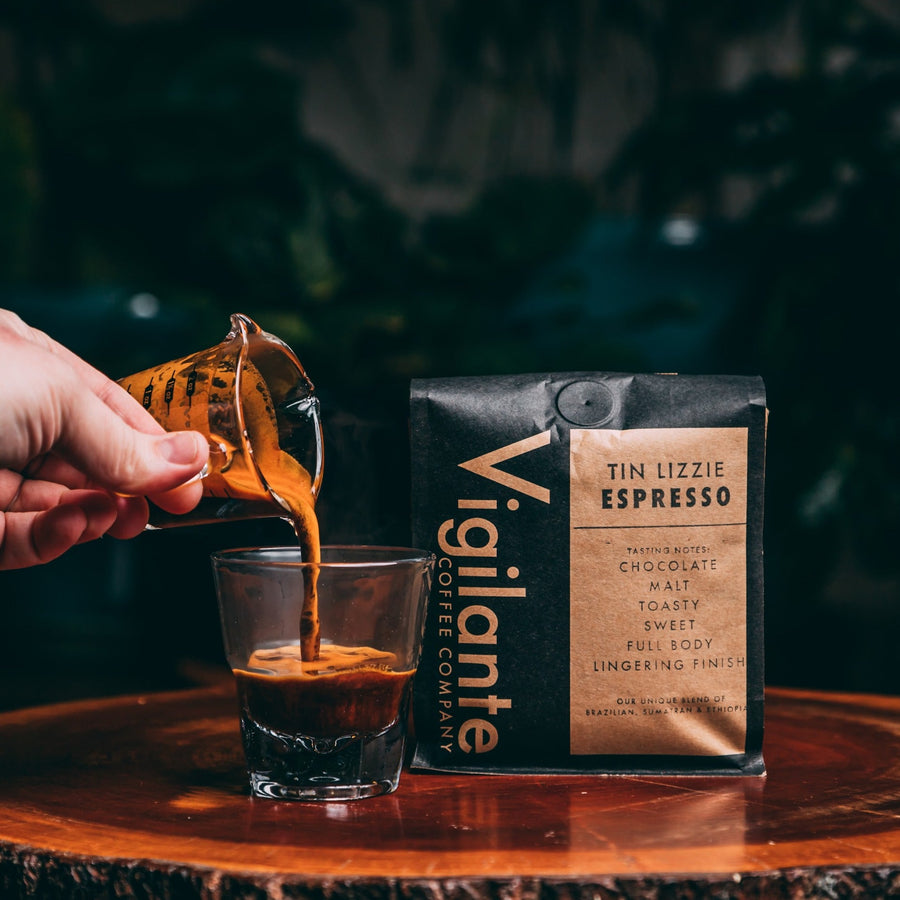Understanding Coffee Beans: the Trip From Coffee to Blended Coffee Beans

The Origins of Coffee: An International Viewpoint
While you might assume of coffee as a modern-day staple, its origins trace back centuries, linking with societies around the world. The story starts in Ethiopia, where legend claims a goat herdsman named Kaldi uncovered the invigorating impacts of coffee beans after observing his goats frolicking energetically after eating them. This sparked rate of interest, leading to coffee's spread to Arab investors who valued the brewed beverage. By the 15th century, it got to Persia, Egypt, and Turkey, where coffee shops became social centers for conversation and society.
As profession courses increased, coffee made its method to Europe in the 17th century, swiftly acquiring appeal. Each society added its special spin to coffee preparation, enhancing its background.
Cultivation and Harvesting of Coffee Beans
As coffee's trip developed, the emphasis shifted to the cultivation and harvesting of certain bean varieties, particularly those made use of for coffee. You'll discover that espresso beans often come from Arabica or Robusta plants, each offering unique flavors. The suitable growing problems consist of high altitudes and rich, well-drained dirt, which enhance the beans' quality.
Throughout the harvest, choosing methods vary. In some regions, workers hand-pick ripe cherries, making sure only the very best fruit goes to handling. In various other locations, mechanical harvesters are used, specifically on larger farms. When the cherries get to peak perfection for maximum taste., timing is essential; you desire to gather.
Once gathered, the beans are gotten ready for processing, which is vital in identifying their final taste. Comprehending the cultivation and harvesting procedures offers you understanding right into what goes right into your favored coffee, improving your admiration for every cup.
Handling Approaches: From Cherry to Bean
Currently that you've found out about harvesting espresso beans, let's check out just how those cherries change into the coffee beans you love. You'll see exactly how various harvesting techniques impact flavor, adhered to by the important steps of fermentation and drying. Lastly, we'll break down the milling and grading procedure that determines your coffee's high quality.
Harvesting Strategies Described
When it involves coffee, understanding harvesting methods is necessary, considering that they straight influence the taste and high quality of the beans you appreciate. There are 2 main methods: discerning selecting and strip selecting. Selective picking involves hand-picking just ripe cherries, guaranteeing you get the finest quality beans. This method typically brings about a richer flavor profile, though it's more labor-intensive. On the other hand, strip selecting ways gathering all cherries at the same time, despite ripeness. While it's quicker and less expensive, this can lead to a mix of flavors, influencing the end product. Inevitably, the choice of harvesting method can substantially affect your coffee experience, so it deserves knowing how those beans made it to your cup.
Fermentation and Drying Out
After gathering, the next steps in processing coffee beans play a significant function fit their flavor. You'll discover that fermentation is crucial, as it aids break down the mucilage surrounding the beans, improving their preference profile. Depending upon the technique, this process can last from a couple of hours to numerous days, with differing results based on temperature and moisture.
Once fermentation is total, drying complies with, which is similarly crucial. You can select from mechanical or sun-drying drying techniques. Sun-drying permits the beans to soak up flavors from the setting, while mechanical drying warranties constant moisture levels no matter climate. Proper drying out is vital to avoid mold and preserve the beans' top quality, eventually influencing your cup of coffee.
Milling and Grading Refine
As fermentation and drying established the phase for flavor growth, the milling and grading procedure assurances that just the best coffee beans make it to your cup. This phase involves getting rid of the outer layers of the coffee cherry, including the parchment and husk. After milling, the beans are arranged by size and weight, ensuring a consistent high quality. You'll discover that grading helps identify defects and classify beans, which impacts taste and scent. Premium beans obtain a greater quality, resulting in a richer coffee experience. Once rated, the beans are ready for product packaging and delivery, protecting their distinct qualities. This meticulous process is essential for supplying the extraordinary preference you enjoy in every sip of your preferred mixture.
Toasting Methods: Opening Taste Possible
When you roast coffee beans, the approach you select can significantly affect the flavor profile. Comprehending the connection in between time, temperature, and roasting methods is crucial to disclosing the potential of your brew. Allow's explore exactly how these aspects integrated to produce the perfect cup.
Roasting Methods Explained
While you might think that all coffee toasting approaches produce the exact same outcomes, the truth is that each method discloses distinct flavor capacities in the beans. Drum roasting makes use of a rotating drum to equally distribute heat, boosting caramelization and creating a balanced flavor. Air roasting, on the various other hand, flows warm air around the beans, advertising a lighter roast with noticable level of acidity.

Effect On Taste Profile
Different toasting techniques not only affect the procedure however also substantially affect the taste profile of the coffee beans. When you select a light roast, you'll experience intense acidity and flower notes, showcasing the bean's beginning. In contrast, a tool roast equilibriums acidity with sweet taste, often disclosing chocolatey undertones. Dark roasts, on the various other hand, bring out bold, great smoky flavors, often concealing the bean's one-of-a-kind qualities. Each method exposes various oils and substances, causing a vast array of tastes. By try out various roasting designs, you can find which profiles resonate with your taste buds. Recognizing these subtleties aids you value the creativity behind your cup of coffee, boosting your general experience with every sip.
Time and Temperature Level Elements
To launch the complete flavor possibility of coffee beans, both time and temperature level throughout the roasting procedure play substantial roles. When roasting, you'll find that higher temperature levels can quickly establish tastes, however if you hurry it, you might end up with scorched notes. Conversely, lower temperature levels permit for a more gradual flavor growth, showcasing the beans' distinct characteristics.

Timing is equally as essential; prolonging the roast too long can cause a loss of level of acidity and illumination, while as well short a roast could leave the beans this article underdeveloped. Finding that pleasant area requires technique and trial and error. By changing these factors, you can expose the rich, intricate flavors hidden within each bean, producing a really remarkable coffee experience.
The Art of Mixing: Crafting Special Coffee Profiles

Begin by picking a base coffee that provides a solid foundation. A brilliant Ethiopian bean can bring fruitiness, while an abundant Brazilian coffee includes body.
As you mix, bear in mind that each mix narrates. You're not just making coffee; you're creating an experience. So, take your time, taste frequently, and delight in the journey of finding your signature blend.
Developing Approaches: Just How Prep Work Impacts Flavor
Mixing coffee opens up a domain of flavor possibilities, however exactly how you make that mix can significantly influence your final mug. Various developing approaches remove unique flavors and scents, so it's important to select wisely. For circumstances, a French press permits oils and debris to stay, developing an abundant, full-bodied experience. On the other hand, a pour-over highlights the coffee's clearness and brightness, ideal for showcasing delicate notes.
Espresso, with its high stress, generates a focused shot that emphasizes sweet taste and crema. If you favor a lighter mixture, take into consideration a cold brew method; it produces a smooth, much less acidic taste.
Inevitably, trial and error is key. Adjusting variables like water temperature, grind dimension, and brew time can change your coffee's profile. So, welcome the art of brewing to discover the tastes hidden in your coffee blends. The right technique can boost your experience to new elevations.
The Future of Coffee: Sustainability and Development
As the coffee market progresses, sustainability and technology are ending up being necessary for dealing with ecological challenges and meeting customer needs. You'll discover that even more coffee firms are adopting green practices, from sourcing beans fairly to applying lasting farming strategies. These shifts not only assist the earth yet also improve the top quality of the coffee you enjoy.
You may see innovations like eco-friendly packaging and water-saving developing approaches that reduce waste. Advanced innovation, such as blockchain, is additionally becoming prominent, making certain transparency in the supply chain, which permits you to map your coffee back to its origins.
On top of that, buying local areas and supporting farmers via reasonable trade efforts cultivates a more lasting coffee environment. As you sip your following mug, keep in mind that your choices can add to a brighter future for coffee. By choosing lasting brand names, you're not simply taking pleasure in a drink; you're making a positive effect on the globe.
Often Asked Questions
What Is the Difference In Between Arabica and Robusta Beans?
Arabica beans are smoother, sweeter, and have a higher acidity, while robusta beans are more powerful, more bitter, and you could check here include even more high levels of caffeine. You'll discover these distinctions in taste and aroma when brewing your coffee.
Just How Does Altitude Affect Coffee Bean Taste?
Altitude impacts coffee bean taste considerably. Higher altitudes create beans with brighter acidity and facility flavors, while reduced altitudes typically yield beans that are much heavier and less nuanced. You'll observe these differences in your cup!
What Are the Wellness Advantages of Drinking Coffee?
Consuming alcohol coffee can enhance your energy, improve mental focus, and even enhance physical efficiency. It's abundant in antioxidants, might lower the threat of certain conditions, and can promote a healthier metabolism when eaten in moderation.
Can Coffee Beans Be Recycled for Brewing?
Yes, you can reuse coffee my response beans for developing, however the taste could be weaker. If you enjoy experimenting, attempt recycling them in different methods, like cool mixtures or adding to smoothies for an added kick.
How Should I Store Coffee Beans for Quality?
To keep your coffee beans fresh, keep them in an airtight container in a cool, dark place. Stay clear of exposing them to light, moisture, or warmth, as these variables can rapidly weaken their taste and fragrance.
Comprehending Coffee Beans: the Journey From Coffee to Blended Coffee Beans.
Now that you've learned about gathering coffee beans, let's check out exactly how those cherries transform into the coffee beans you like.When you roast coffee beans, the approach you pick can drastically influence the taste account - Single Origin Espresso.While you may assume that all coffee roasting techniques produce the very same outcomes, the truth is that each technique reveals special taste possibilities in the beans.Various toasting techniques not just influence the process however additionally significantly influence the taste account of the coffee beans
Comments on “Discover the Rich Flavor Profile of SOE Single Origin Espresso Today”